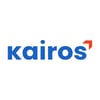Product launches are a crucial part of any company’s product strategy, as they determine the success of the product in the market. A well-planned and executed product launch can make all the difference between a successful product and a failed one. In this article, we will discuss the key tips, strategies, and things to keep in mind while planning a product launch, and also explore how the Jobs-to-be-Done (JTBD) framework can help with product launch and product launch strategies.
Key tips for a successful product launch:
Here are some of the important tips to keep in mind in order to ensure successful product launch:
Define your target audience: Knowing your target audience is crucial in determining the right strategy for your product launch. Understanding their needs, preferences, and pain points will help you create a product that resonates with them.
Timing is key: Timing is everything when it comes to product launches. You need to make sure that your product launch coincides with key events or trends in your industry, as well as being timed to maximize the impact of your launch.
Build a strong brand image: A strong brand image can make all the difference in the success of your product launch. Make sure that your brand is well established and that your launch is aligned with your brand’s values, mission, and goals.
Create a unique value proposition: Your product launch should focus on what sets your product apart from the competition. Clearly communicate the unique value that your product offers and how it solves the problems of your target audience.
Generate buzz and excitement: Generating buzz and excitement is key to a successful product launch. Use social media, influencer marketing, and other tactics to create anticipation and excitement for your launch.
Measure and evaluate: Measure the success of your product launch by tracking key metrics such as sales, customer feedback, and engagement. Use this information to evaluate your launch strategy and make necessary adjustments to improve future launches.
Some inspirational product launch stories
There are numerous product launches that have been successful in different ways and can serve as inspiration for your own product launch. Here are a few examples:
Apple iPhone: Apple’s launch of the iPhone in 2007 set the standard for successful product launches. Apple created a huge buzz around the iPhone by releasing teasers and hints in the months leading up to the launch, building anticipation and excitement among consumers. On launch day, Apple stores around the world were packed with customers eager to get their hands on the new product.
Tesla Model 3: Tesla’s launch of the Model 3 electric car in 2017 was a triumph of brand building and marketing. Tesla leveraged social media, influencer marketing, and word of mouth to generate excitement for the Model 3 and build a sense of community around the brand. On launch day, thousands of people lined up to place their pre-orders for the car, and Tesla received over 400,000 pre-orders within a week.
Google Chromecast: Google’s launch of the Chromecast in 2013 was a prime example of a successful product launch based on a unique value proposition. Chromecast offered a simple, affordable way to stream video content from your phone or tablet to your TV, making it a hit with consumers. Google’s marketing efforts, which focused on highlighting the convenience and affordability of Chromecast, helped drive its success.
Amazon Echo: Amazon’s launch of the Echo smart speaker in 2014 was a game-changer in the smart home market. Amazon’s marketing efforts focused on highlighting the convenience of the Echo, and the company’s extensive network of partners and integrations helped to build excitement for the product. On launch day, the Echo was an instant hit with consumers, and it has since become one of Amazon’s most popular products.
These are just a few examples of successful product launches that can serve as inspiration for your own product launch. Each of these launches was successful in its own way, and each offers valuable lessons for companies looking to launch their own products. Whether you’re launching a new product, or seeking to reinvigorate an existing product, these examples can provide valuable insights and inspiration.
JTBD framework for enhancing product launch strategies:
The Jobs-to-be-Done (JTBD) framework is a customer-centric approach to product development and marketing that helps companies understand the underlying motivations and needs of their customers. When applied to product launches, the JTBD framework can help companies identify the job that their product is hired to do, and the outcomes that customers are seeking.
Here are some strategies for using the JTBD framework in your product launch:
Identify the job: Start by identifying the job that your product is hired to do. This could be anything from solving a specific problem, to providing a certain level of convenience, to helping customers achieve a desired outcome.
Understand the customer’s motivation: Once you have identified the job that your product is hired to do, the next step is to understand the customer’s motivation for hiring your product. What are their pain points, and what outcomes are they seeking?
Create a launch plan that addresses the job: With a deep understanding of the job and the customer’s motivation, create a launch plan that addresses the job and focuses on the outcomes that the customer is seeking. This could involve showcasing how your product solves their problems, highlighting the unique value that your product offers, and demonstrating how it meets their needs.
Measure success based on outcomes: Finally, measure the success of your product launch based on the outcomes that the customer is seeking. This will give you a clear picture of the impact that your product is having on your customers and help you make necessary adjustments to improve future launches.
In essence, a successful product launch requires careful planning, attention to detail, and a deep understanding of your target audience. By incorporating key tips and strategies, such as defining your target audience, timing your launch, building a strong brand image, creating a unique value proposition, generating buzz and excitement, and measuring and evaluating your launch, you can increase your chances of success.
Additionally, using the Jobs-to-be-Done (JTBD) framework can provide a customer-centric approach to your product launch and help you understand the motivations and needs of your target audience, leading to a more effective launch strategy.
Remember, a successful product launch is just the first step. Ongoing marketing efforts, product development, and customer feedback should be incorporated into your product launch strategy to ensure the long-term success of your product in the market.
In conclusion, planning a product launch requires careful consideration of various factors, including your target audience, timing, branding, value proposition, marketing efforts, and metrics for success. Incorporating the JTBD framework can provide a valuable perspective on your target audience and lead to a more effective product launch strategy. By following these tips and strategies, you can increase the chances of a successful product launch and achieve long-term success in the market.







Top comments (0)